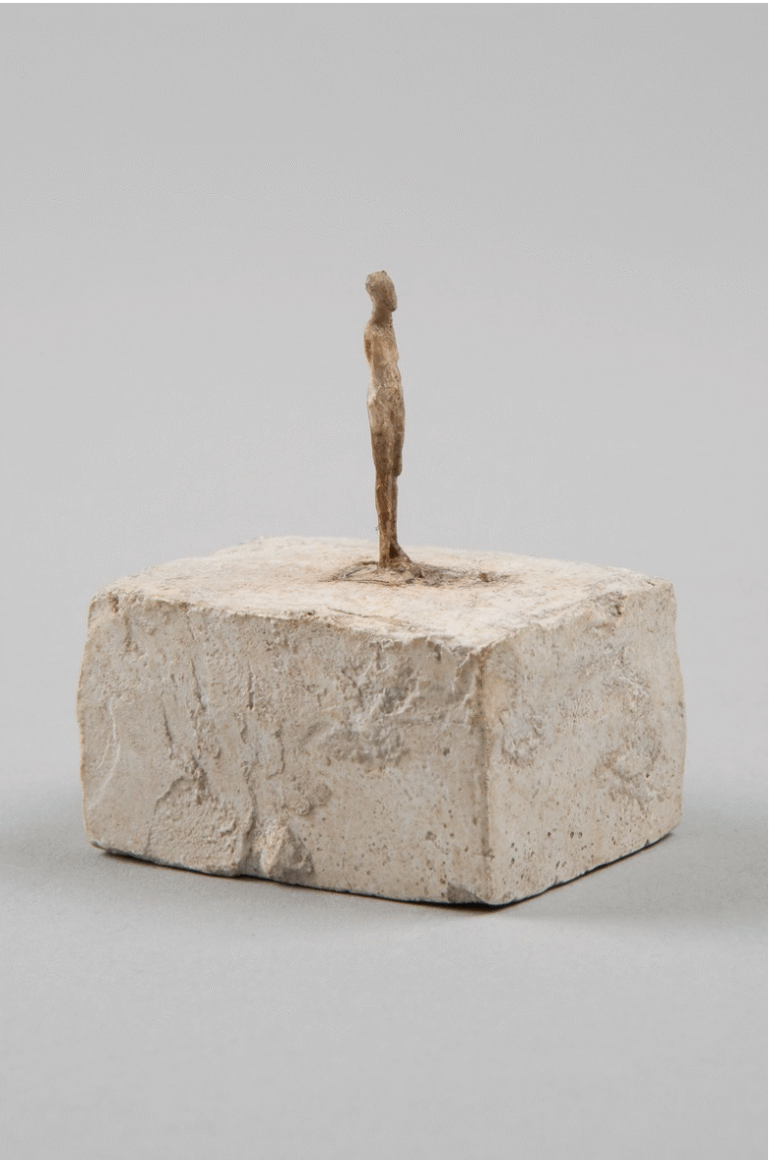For the first time in Marseille, the work of the renowned sculptor and painter Alberto Giacometti is the focus of a major monographic exhibition at Museum Cantini, in collaboration with the Fondation Giacometti. Alberto Giacometti – Sculpter le Vide brings together a striking selection of iconic works–plaster and bronze sculptures, paintings, drawings, and prints–to explore a theme central to Giacometti’s practice: the void.
Described by Jean-Paul Sartre as an artist of “emptiness,” Giacometti used sculpture not only to represent form but to articulate absence, presence, and the existential tension between the two. “Sculpture,” Sartre once wrote of Giacometti’s work, “is a way of experiencing space.” In this carefully curated exhibition, that space—empty, charged, haunting—is both subject and medium.
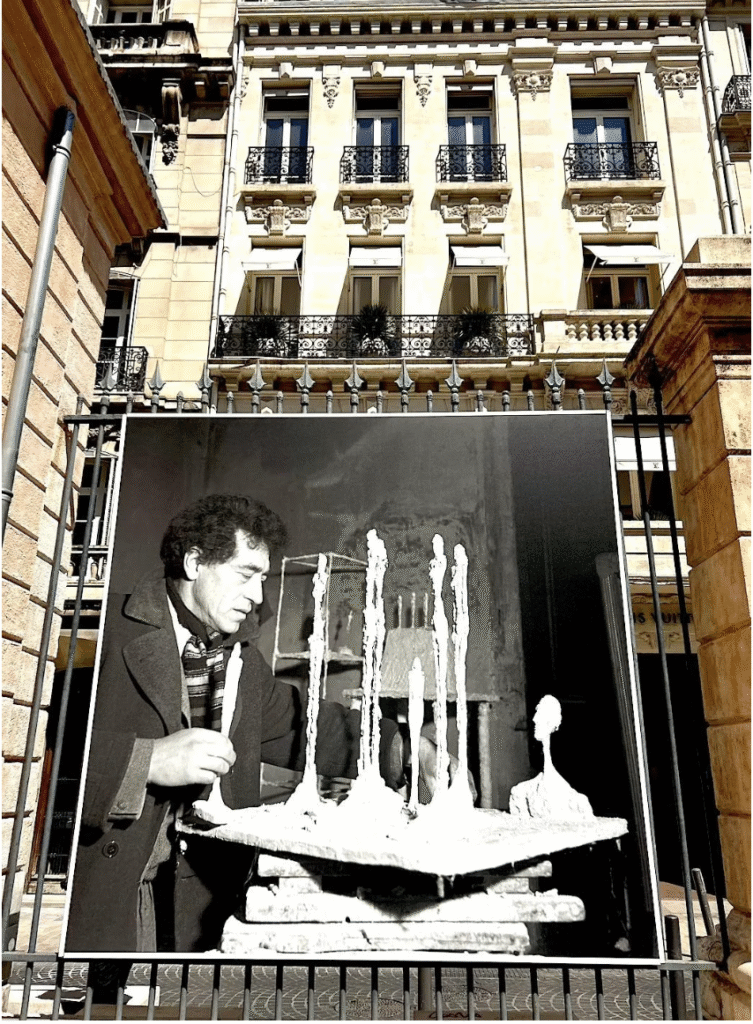
Sculpting Absence: A Chronological Journey
Curated collaboratively by Romain Perrin (Fondation Giacometti), Inès de Bordas (who initiated the project), and Louise Madinier (Museum Cantini), the exhibition is structured across four thematic and chronological rooms. Each space presents a distinct atmosphere, shaped by a scenography that foregrounds Giacometti’s sculptural interrogation of form and void.
Madinier begins the guided tour in a serene, light-dappled gallery filled with white marble and plaster sculptures from the 1920s. Here, Giacometti’s early engagement with Cubism and non-Western art is immediately evident. Works like Le Couple (1926) and Femme (plate III) (1927–29), a minimalist tablet-like form with circular and curved impressions, reveal a poetic abstraction—birds flying toward a sun, perhaps, or celestial bodies in orbit.
At the heart of this room stands Femme Cuillère (Spoon Woman) (1927), a concave, commanding form that exemplifies Sartre’s assertion. The hollow belly of the figure is as much a statement of absence as presence—a void sculpted into significance.
In this early period, Giacometti abandoned strict representation and embraced the formal experimentation of High Antiquity, African and Oceanic art, and Cubist geometry. His “plaques,” resembling ancient steles, are etched with delicate lines and shallow reliefs that resemble surgical incisions—fragments of bodies emerging from absence. As poet Jacques Dupin wrote, they offer a “rhythmic accentuation of the void.”
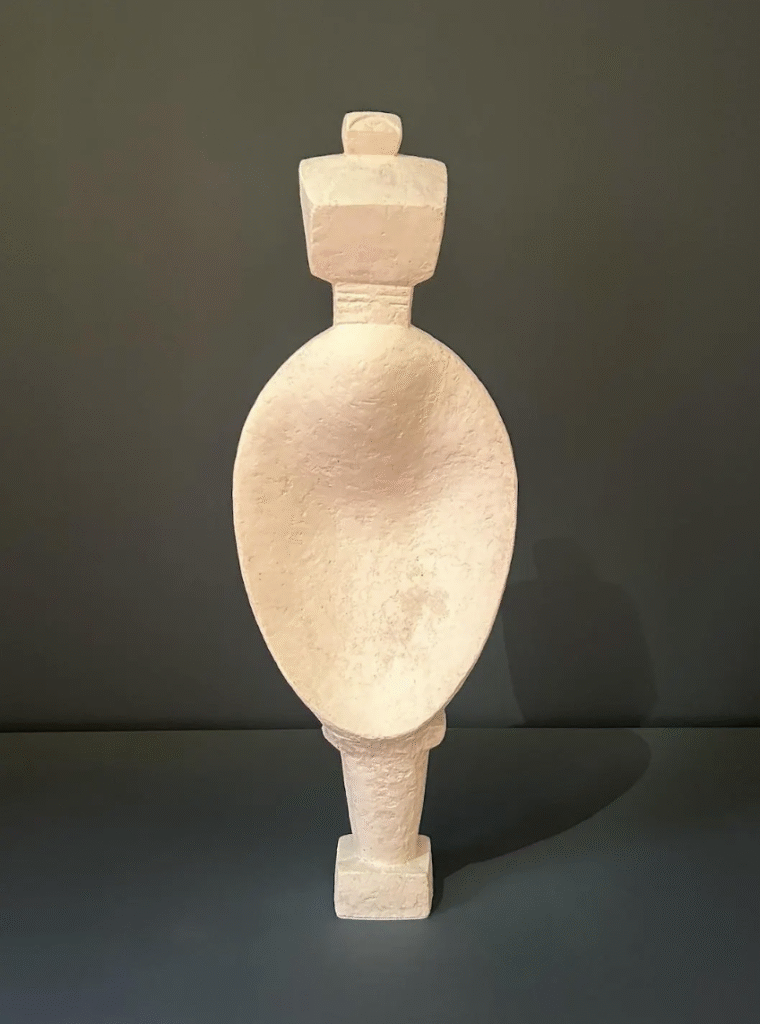
Surrealism, Loss, and the War-Torn Psyche
The second gallery marks a dramatic shift in tone. Moving into the 1930s and 40s, Giacometti’s work becomes darker, more introspective, reflecting his engagement with the Surrealist movement and the trauma of war. The room’s mood intensifies–light recedes, and the sculptures take on a spectral quality.
Highlights include the enigmatic painting Le Palais à 4 heures du matin (1932) and the fragile, feverish Fleur en danger(1932). Surrealism seeps into Giacometti’s formal language with hallucinatory precision. In Boule suspendue (1930), a suspended ball hovers provocatively above a curved, phallic form inside a cage-like frame, fusing erotic tension with dream logic.
At the far end, the haunting L’Objet invisible (Mains tenant le vide) (1934) stands as a deeply personal tribute to Giacometti’s father. The sculpture–hands holding nothing–channels the grief of loss and the spiritual silence of absence. Its mask-like face echoes Egyptian death masks and World War I armor, hinting at a universal human vulnerability.
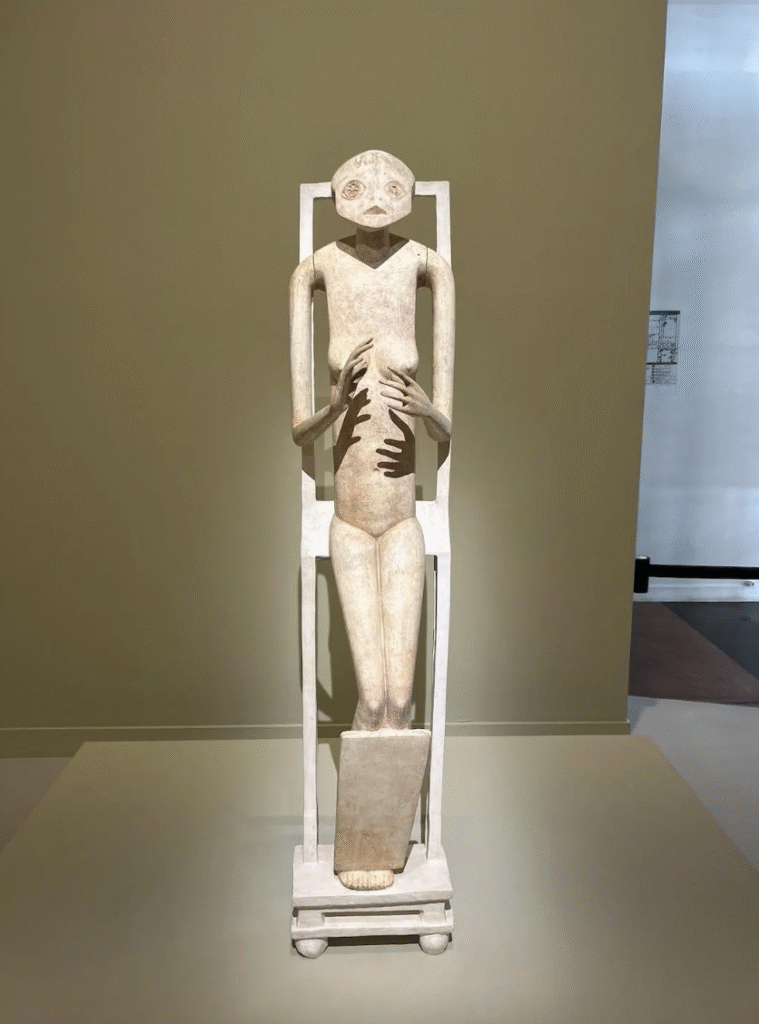
After the War: Figures in Space
The third section, covering the post-war years until Giacometti’s death in 1966, is anchored in his most iconic visual language: elongated, skeletal figures that strain the boundaries of scale, distance, and perception. These works probe the relationship between the body and surrounding space, often creating optical dissonance or exaggerated perspective.
In Very Small Figurine (1937–39), placed inside a disproportionately large glass vitrine, the surrounding emptiness heightens the sculpture’s fragility. Woman with a Cart (1943–45), The Nose (1949), and Large Woman I (1960) further develop Giacometti’s preoccupation with the metaphysics of scale and the void.
A City-Specific Dialogue
The exhibition feels rooted in Marseille not just through its venue but in its intellectual architecture. Housed in a 17th-century mansion gifted to the city by Jules Cantini in 1916, the Museum Cantini provides a dignified and luminous setting. Its permanent collection of early 20th-century modern art includes works by Giacometti’s peers–André Derain, Balthus, and several Surrealists–offering a rich contextual dialogue.
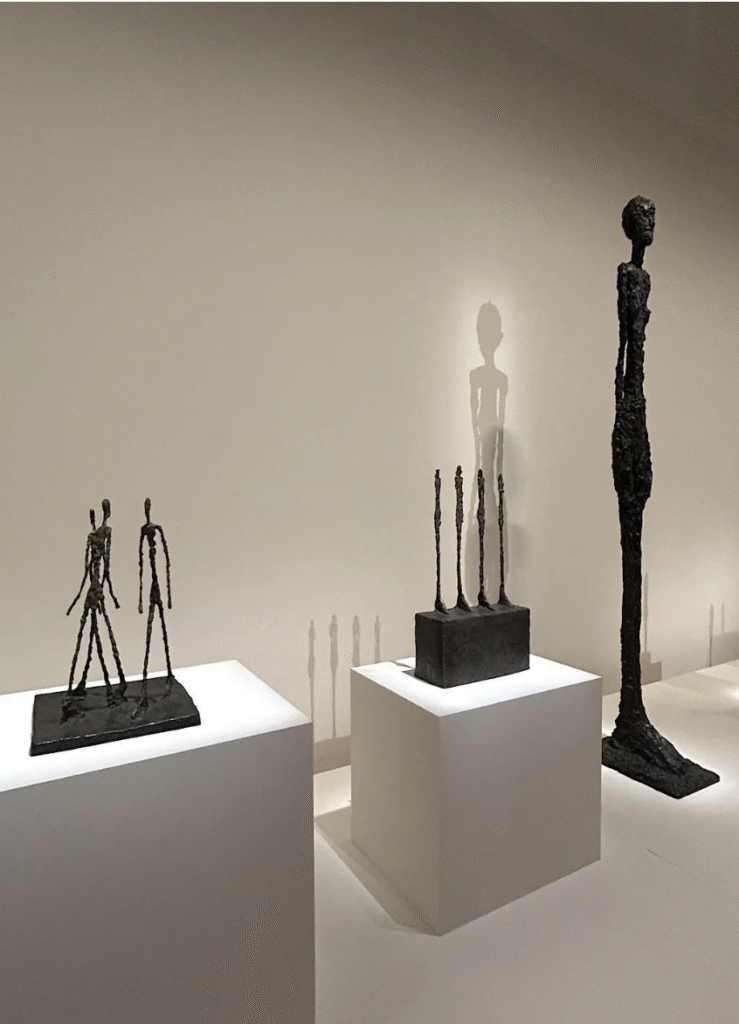
“The Museum Cantini is the perfect place… it’s one of the great Modern art collections in France, and many of Giacometti’s friends are here. Marseille is the second city in France, yet it has never hosted a Giacometti exhibition. This project also creates a unique dialogue between Giacometti and the city’s ancient heritage, including Greek and Roman objects from local collections.” Romain Perrin
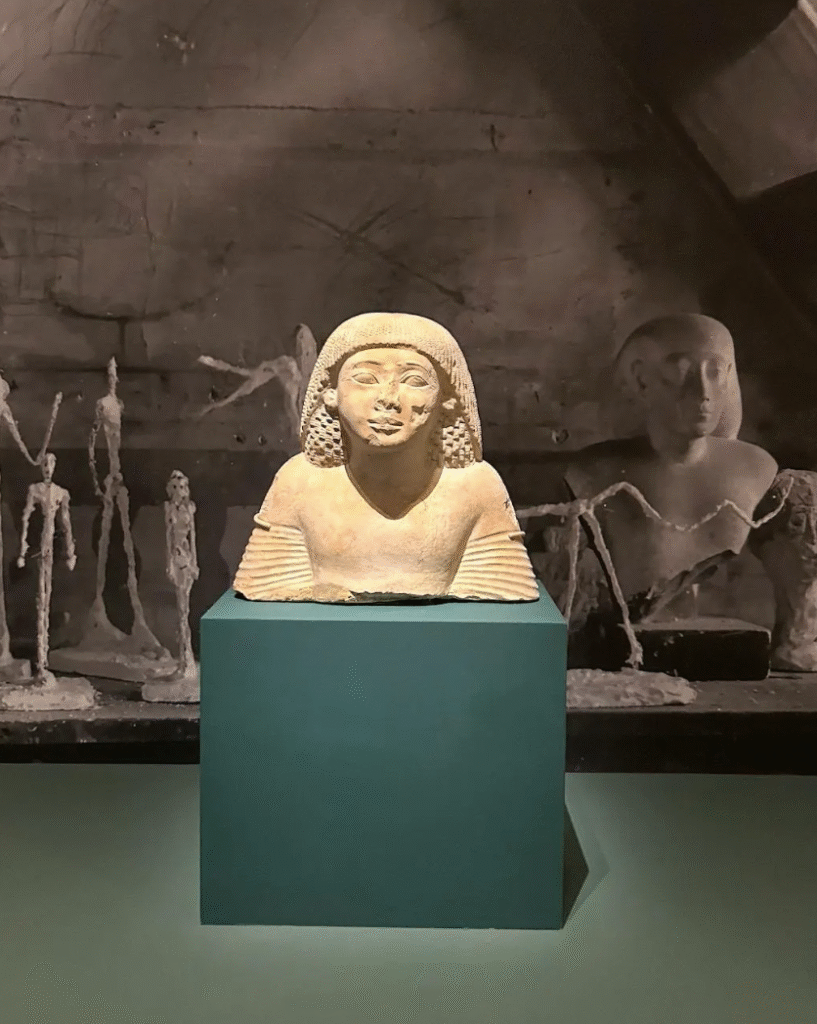
The Imaginary Museum
The final room–titled The Imaginary Museum—invokes André Malraux’s 1947 book of the same name. Here, Giacometti’s drawings and prints are displayed alongside ancient and non-Western objects from Marseille’s Museum of Mediterranean Archaeology and the Museum of African, Oceanic and Amerindian Arts (MAAOA). This section underscores the profound influence of global art traditions on Giacometti’s practice while carefully sidestepping any colonial framing.
“We wanted to create dialogues without reproducing a colonial gaze,” explains Perrin. “Each piece is shown for itself, through a 21st-century lens.” Romain Perrin
A Scenography of Emptiness
The exhibition’s scenography—developed by a Paris-based design studio—is integral to its success. Each room offers a distinct emotional and spatial experience, enhancing the chronological narrative. The Surrealist section, housed in a transitional gallery, feels like a strange, immersive corridor of the unconscious. Elsewhere, curved walls, theatrical platforms, and carefully calibrated lighting intensify the interplay of form and void.
“We chose light that highlights the details of the sculpture,” Perrin notes. “It’s all those little details that make the scenography coherent with the theme of emptiness.” Romain Perrin
Alberto Giacometti – Sculpter le Vide is more than a retrospective—it is an invitation to meditate on what lies between presence and absence, form and dissolution, body and space. In a city shaped by the rhythms of the Mediterranean and the traces of ancient civilizations, Giacometti’s sculptures echo with haunting clarity.
Alberto Giacometti – Sculpter le Vide is at the Museum Cantini, Marseille until 28 September 2025.
Co-organised by la Ville de Marseille – Musées de Marseille and la Fondation Giacometti, Paris


